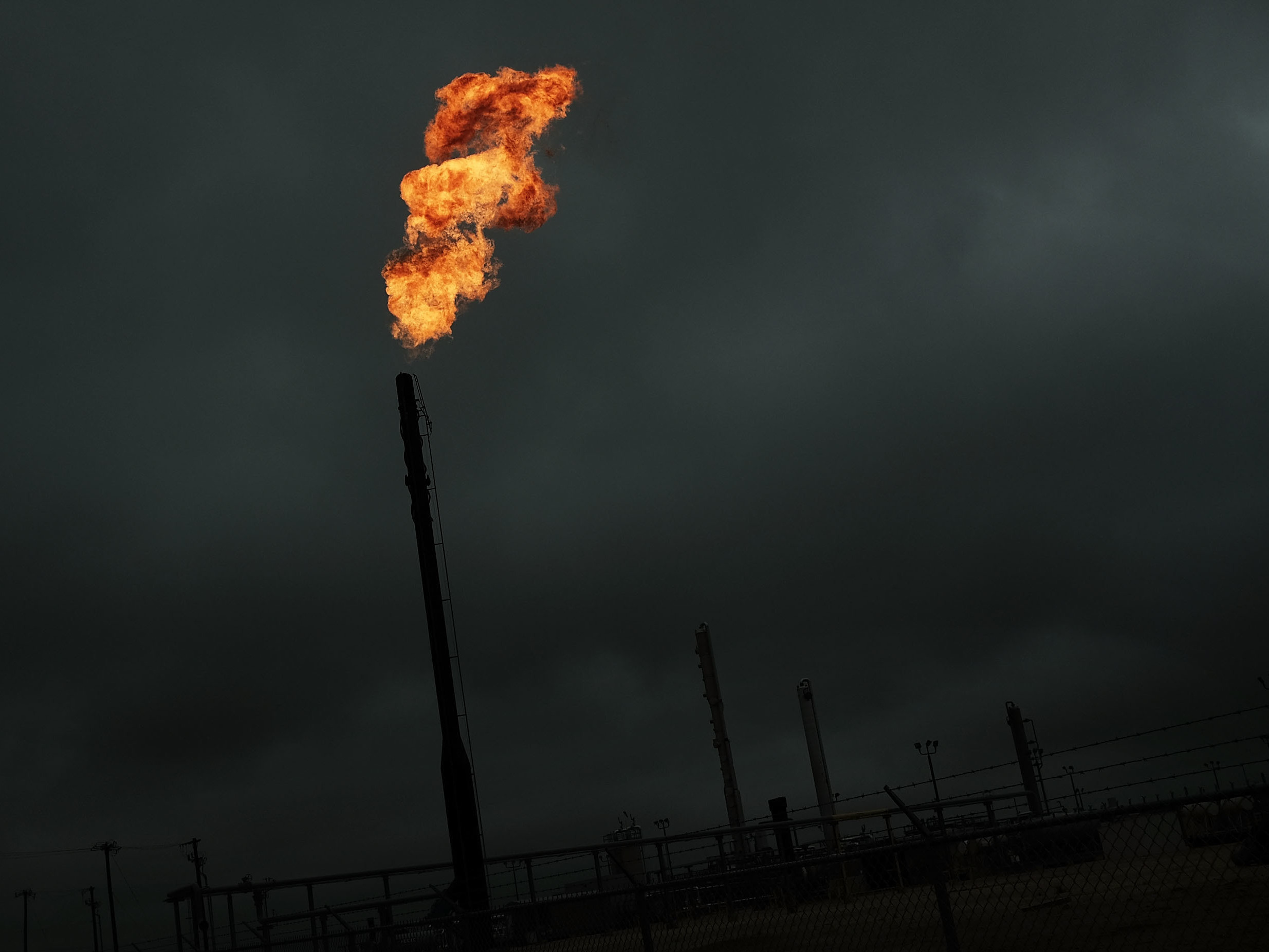
There’s new evidence, collected from orbiting satellites, that oil and gas companies are routinely venting huge amounts of methane into the air.
Methane is the main ingredient in natural gas, the fuel. It’s also a powerful greenhouse gas, second only to carbon dioxide in its warming impact. And Thomas Lauvaux, a researcher with the Laboratory of Climate and Environmental Sciences, in France, says that there’s been a persistent discrepancy between official estimates of methane emissions and field observations.
“For years, every time we had data [on methane emissions] – we were flying over an area, we were driving around, we always found more emissions than we were supposed to see,” he says.
Researchers turned to satellites in an effort to get more clarity. The European Space Agency launched an instrument three years ago, called the TROPOspheric Monitoring Instrument (TROPOMI), that can measure the methane in any 12-square-mile block of the atmosphere, day by day.
Lauvaux says that TROPOMI detected methane releases that the official estimates did not foresee. “No one expects that pipelines are sometimes wide open, pouring gas into the atmosphere,” he says.
Yet they were. Over the course of two years, during 2019 and 2020, the researchers counted more than 1800 large bursts of methane, often releasing several tons of methane per hour. Lauvaux and his colleagues published their findings this week in the journal Science.
The researchers consulted with gas companies, trying to understand the source of these “ultra-emitting events.” They found that some releases resulted from accidents. More often, though, they were deliberate. Gas companies simply vented gas from pipelines or other equipment before carrying out repairs or maintenance operations.
Lauvaux says these releases could be avoided. There’s equipment that allows gas to be removed and captured before repairs. “It can totally be done,” he says. “It takes time, for sure; resources and staff. But it’s do-able. Absolutely.”
The countries where bursts of methane happened most frequently included the former Soviet republic of Turkmenistan, Russia, the United States, Iran, Kazakhstan, and Algeria. Lauvaux says they found relatively few such releases in some other countries with big gas industries, such as Saudi Arabia.
According to the researchers, the large releases of methane that they detected accounted for eight to twelve percent of global methane emissions from oil and gas infrastructure during that time.
Steven Hamburg, chief scientist for the Environmental Defense Fund, which has focused on the problem of methane emissions, says that these massive releases are dramatic. But it’s also important to remember the “ordinary” leaks that make up the other 90 percent of emissions from oil and gas facilities. “They really matter!” he says.
EDF is planning to launch its own methane-detecting satellite in about a year, which will take much sharper pictures, showing smaller leaks. Other organizations are developing their own methane detectors.
That new monitoring network will transform the conversation about methane emissions, Hamburg says. Historically, no one could tell where methane was coming from, “and that’s part of the reason we haven’t taken, globally, the action that we should. It was just out of sight, out of mind,” Hamburg says. “Well, it no longer will be. It will be totally visible.”
He thinks that will translate into more pressure on oil and gas companies to fix those leaks.
9(MDQ2OTU5NjExMDE2MTkwMTE2MDExMzAxYg000))




